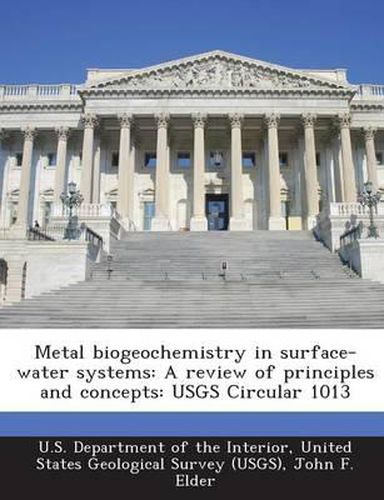Readings Newsletter
Become a Readings Member to make your shopping experience even easier.
Sign in or sign up for free!
You’re not far away from qualifying for FREE standard shipping within Australia
You’ve qualified for FREE standard shipping within Australia
The cart is loading…






Metals are ubiquitous in natural surface-water systems, both as dissolved constituents and as particulate constituents. Although concentrations of many metals are generally very low (hence the common term ‘trace metals’), their effects on the water quality and the biota of surfacewater systems are likely to be substantial. Biogeochemical partitioning of metals results in a diversity of forms, including hydrated or ‘free’ ions, colloids, precipitates, adsorbed phases, and various coordination complexes with dissolved organic and inorganic ligands. Much research has been dedicated to answering questions about the complexities of metal behavior and effects in aquatic systems. Voluminous literature on the subject has been produced. This paper synthesizes the findings of aquatic metal studies and describes some general concepts that emerge from such a synthesis. Emphasis is on sources, occurrence, partitioning, transport, and biological interactions of metals in freshwater systems of North America.
$9.00 standard shipping within Australia
FREE standard shipping within Australia for orders over $100.00
Express & International shipping calculated at checkout
Metals are ubiquitous in natural surface-water systems, both as dissolved constituents and as particulate constituents. Although concentrations of many metals are generally very low (hence the common term ‘trace metals’), their effects on the water quality and the biota of surfacewater systems are likely to be substantial. Biogeochemical partitioning of metals results in a diversity of forms, including hydrated or ‘free’ ions, colloids, precipitates, adsorbed phases, and various coordination complexes with dissolved organic and inorganic ligands. Much research has been dedicated to answering questions about the complexities of metal behavior and effects in aquatic systems. Voluminous literature on the subject has been produced. This paper synthesizes the findings of aquatic metal studies and describes some general concepts that emerge from such a synthesis. Emphasis is on sources, occurrence, partitioning, transport, and biological interactions of metals in freshwater systems of North America.